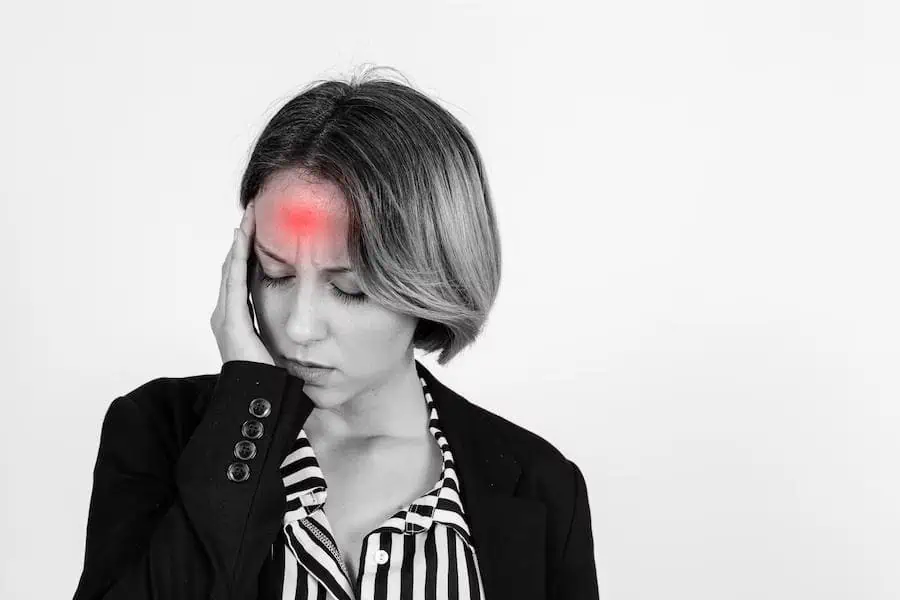Exploring New Therapies for Nerve Pain and Knee Discomfort
- Home
- Exploring New Therapies for Nerve Pain and Knee Discomfort


Nerve pain and knee discomfort are two issues that can have an impact on someone’s quality of life. Despite the availability of treatments for these conditions, new therapies are continually being developed.
Nerve pain arises from nerve damage caused by factors such as injury, illness or specific medications. Knee discomfort is a term encompassing any form of pain or unease in the knee area, stemming from injury, arthritis or excessive use of the knee.
Emerging therapies are still undergoing development, requiring research to assess their long-term efficacy and safety. Nevertheless, these treatments provide hope for individuals experiencing nerve pain and knee discomfort who have not seen improvement with remedies.

(Source:https://www.freepik.com/free-photo/businesswoman-with-headache_1915836.htm#query=nerve%20pain&position=24&from_view=search&track=ais)
Nerve pain in the knee can really disrupt your activities and hobbies. The pain could stem from the pelvis or even tiny nerves within the knee itself. It might be triggered by nerve irritation post-surgery or as a result of knee arthritis.
When you experience pain you may feel sensations like numbness, tingling, burning, itching or electric shocks that worsen in specific positions. It’s recommended to undergo an assessment to pinpoint the source of the knee pain related to nerves. This evaluation could also lead to identifying conditions.
Nerve injuries in the knee are commonly observed following procedures such as knee replacements, which can stretch out the outer nerves and lead to weakened ankle strength known as foot drop. Moreover, sensory nerves on both sides of the knee can get aggravated due to pressures, types of clothing worn, knee braces used, past surgeries or incisions made and particularly when there is instability in the knees.

(Source:https://www.freepik.com/free-photo/sportswoman-feeling-pain-holding-her-injured-knee-while-sitting-floor-home_25567175.htm#page=2&query=knee%20discomfort&position=33&from_view=search&track=ais)
Nerve pain is a concern that often calls for attention and prescribed treatments. Nonetheless, there are also prescription remedies that could be helpful. Combining these options with prescribed treatments might be an idea for milder cases. Here’s an overview of treatments.
Knee discomfort is an issue that can stem from factors such as injury, arthritis or overuse. Treatment options for knee discomfort range from over-the-counter pain relievers, prescribed medications, physical therapy to surgical interventions. In times there has been growing interest in therapies for knee discomfort. Although these new treatments are still in the phases of development, they hold promise for providing effective and enduring relief compared to traditional methods.
Stem Cell Therapy shows potential as a strategy for addressing neuropathy by aiding in the regeneration of damaged nerves and restoring their functionality. Mesenchymal stem cells (MSCs) are particularly suited for this purpose as they can develop into cell types including nerve cells and release growth factors that facilitate nerve growth and repair.
Stem cell therapy for knee issues involves using the body’s natural healing abilities to help those with osteoarthritis. By injecting stem cells into the joint, it aims to repair damaged cartilage, decrease inflammation and stimulate the production of growth factors that aid in tissue healing. This method is an option compared to traditional knee replacement surgery offering improved joint function and reduced pain without requiring an extensive recovery period.
Injuries to nerves are common among individuals who have experienced trauma to their limbs leading to motor and sensory impairments that impact life. Research suggests that electrical stimulation can support axon growth and speed up the return of motor functions. Electrical stimulation can be classified based on its effects and parameters as functional electrical stimulation. Its therapeutic benefits include preventing muscle atrophy, facilitating muscle nerve reconnection, boosting protein creation, and neurotrophic factors adjusting feedback and alleviating neuralgia by suppressing certain pathways.
Gene therapy aims to address the impact of pain on the individual’s quality of life and healthcare costs. Advances in understanding pain mechanisms have paved the way for treatment options. By delivering substances to specific nerves or areas through gene transfer, there is potential to disrupt pain signals and prevent long lasting discomfort caused by nervous system changes.
In gene therapy, genetic material is introduced into cells to replace genes or introduce new genes for therapeutic purposes. This process involves creating a vector through modification to transport the gene into cells. While viruses are commonly used as vectors due to their ability to infect cells efficiently, they are altered to ensure they do not cause harm. For instance, in treating arthritis, the vector is injected into the affected joints and then absorbed by cells.
The human body naturally creates hyaluronic acid, a substance found in the fluid that helps lubricate and cushion joints enabling joint movement. Osteoarthritis (OA) can lead to a decrease in acid levels within the joint. Injecting acid can help replenish the body’s supply of it. This procedure is called viscosupplementation, where the injection aids in improving quality.
Having discomfort in your nerves and knees can really make it tough to go about your activities. There are plenty of things you can do to ease the pain and get back to functioning.
Resting up is crucial when dealing with nerve and knee discomfort. Giving your body the time it needs to rejuvenate during sleep can speed up the relief from symptoms. Sometimes simply resting the affected area and getting proper shut eye is all it takes for healing to happen naturally.
Maintaining posture is key in managing nerve and knee issues. Poor posture can contribute to this. It puts added strain on your spine and muscles that may lead to a pinched nerve. Using cushions, chairs or neck rests while sitting can help reduce pressure and aid in nerve recovery.
Incorporating stretching exercises or yoga into your routine can also help alleviate tension and stress in the areas. It’s important not to overdo it as pushing yourself hard could worsen the symptoms. If you feel any pain or discomfort while exercising, it’s best to stop to prevent damage to the nerve.
When experiencing nerve pain and knee discomfort, raising your legs can offer relief by reducing pressure on the spine. Simply place a couple of pillows under your knees to elevate your legs at a 45° angle to your body.
Dealing with nerve pain and knee issues can greatly affect one’s life. While there are existing treatments, not everyone responds well to these methods. Fortunately, ongoing research is introducing therapies that hold potential in alleviating nerve pain and knee discomfort. Set up a consultation with our orthopaedic surgeon to discuss your nerve and knee pain.
● Gene therapy: Gene therapy is a treatment that involves changing the genes of cells to treat a disease. Gene therapy is being investigated as a potential treatment for nerve pain by targeting genes that are involved in pain signaling.
● Stem cell therapy: Stem cells are cells that can develop into different types of cells in the body. Stem cell therapy is a promising new treatment for nerve pain that involves injecting stem cells into the affected area. Stem cells can help to repair damaged nerves and reduce pain.
● Electrical stimulation therapy: Electrical stimulation therapy is a treatment that uses electrical currents to stimulate nerves. Electrical stimulation therapy is being investigated as a potential treatment for nerve pain by blocking pain signals or reducing inflammation.
● Laser therapy: Laser therapy is a treatment that uses low-level laser light to stimulate tissue repair. Laser therapy is being investigated as a potential treatment for nerve pain by reducing inflammation and pain.
● Platelet-rich plasma injections: Platelet-rich plasma is a concentrated form of platelets, which are blood cells that help to promote healing. Platelet-rich plasma injections are being investigated as a potential treatment for nerve pain by promoting nerve regeneration.
● Hyaluronic acid injections: Hyaluronic acid is a natural substance that helps to lubricate the joints. Hyaluronic acid injections can help to reduce pain and improve function in people with knee discomfort.
● Platelet-rich plasma injections: Platelet-rich plasma is a concentrated form of platelets, which are blood cells that help to promote healing. Platelet-rich plasma injections can help to repair damaged cartilage and reduce pain in people with knee discomfort.
● Stem cell therapy: Stem cell therapy is a promising new treatment for knee discomfort that involves injecting stem cells into the knee joint. Stem cells can help to repair damaged cartilage and reduce pain.
● Gene therapy: Gene therapy is being investigated as a potential treatment for knee discomfort by targeting genes that are involved in inflammation and pain.
● Artificial intelligence: Artificial intelligence is being used to develop new treatments for knee discomfort. For example, AI is being used to develop personalized treatment plans and to predict which patients are most likely to benefit from certain treatments.
● How effective are new therapies for nerve pain and knee discomfort?
● The effectiveness of new therapies for nerve pain and knee discomfort is still being investigated. Some of these therapies have shown promise in early studies, but more research is needed to determine their long-term effectiveness and safety.
Some new therapies for nerve pain and knee discomfort are still in the early stages of development and are not yet available to the public. However, others are in clinical trials and may be available in the future.
You can learn more about new therapies for nerve pain and knee discomfort by talking to your doctor or doing some research online. There are also a number of patient advocacy organizations that can provide information about new treatments.
Like any medical treatment, there are risks associated with new therapies for nerve pain and knee discomfort. These risks may vary depending on the specific treatment. Some of the potential risks include:
● Side effects, such as pain, swelling, or infection.
● Allergic reactions.
● Serious complications, such as nerve damage or blood clots.
If you are considering a new therapy for nerve pain or knee discomfort, it is important to talk to your doctor about the risks and benefits of the treatment. Your doctor can help you decide if the treatment is right for you.
Researchers are constantly working to develop new and improved treatments for nerve pain and knee discomfort. Some of the promising future trends include:
● The use of gene therapy to target genes that are involved in pain signaling or inflammation.
● The use of stem cell therapy to repair damaged nerves or cartilage.
● The use of electrical stimulation therapy to block pain signals or reduce inflammation.
● The use of artificial intelligence to develop personalized treatment plans and to predict which patients are most likely to benefit from certain treatments.

Dr Yong Ren graduated from the National University of Singapore’s Medical faculty and embarked on his orthopaedic career soon after. Upon completion of his training locally, he served briefly as an orthopaedic trauma surgeon in Khoo Teck Puat hospital before embarking on sub-specialty training in Switzerland at the famed Inselspital in Bern.
He underwent sub-specialty training in pelvic and spinal surgery, and upon his return to Singapore served as head of the orthopaedic trauma team till 2019. He continues to serve as Visiting Consultant to Khoo Teck Puat Hospital.
Well versed in a variety of orthopaedic surgeries, he also served as a member of the country council for the local branch of the Arbeitsgemeinschaft für Osteosynthesefragen (Trauma) in Singapore. He was also involved in the training of many of the young doctors in Singapore and was appointed as an Assistant Professor by the Yong Loo Lin School of Medicine. Prior to his entry into the private sector, he also served as core faculty for orthopaedic resident training by the National Healthcare Group.
Dr Yong Ren brings to the table his years of experience as a teacher and trainer in orthopaedic surgery. With his expertise in minimally invasive fracture surgery, pelvic reconstructive surgery, hip and knee surgery as well as spinal surgery, he is uniquely equipped with the tools and expertise necessary to help you on your road to recovery.